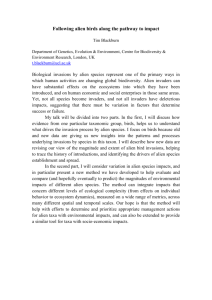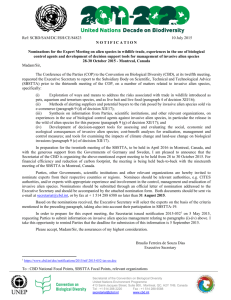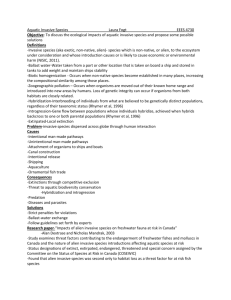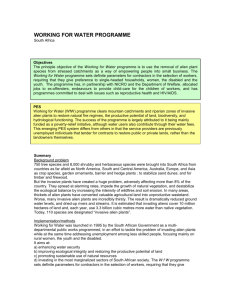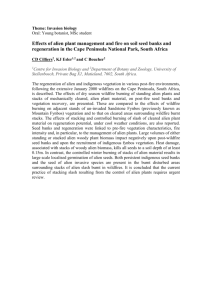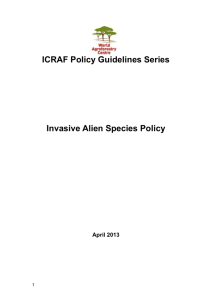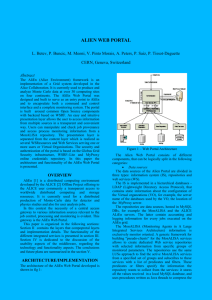CBD Thematic Report on Alien Species
advertisement
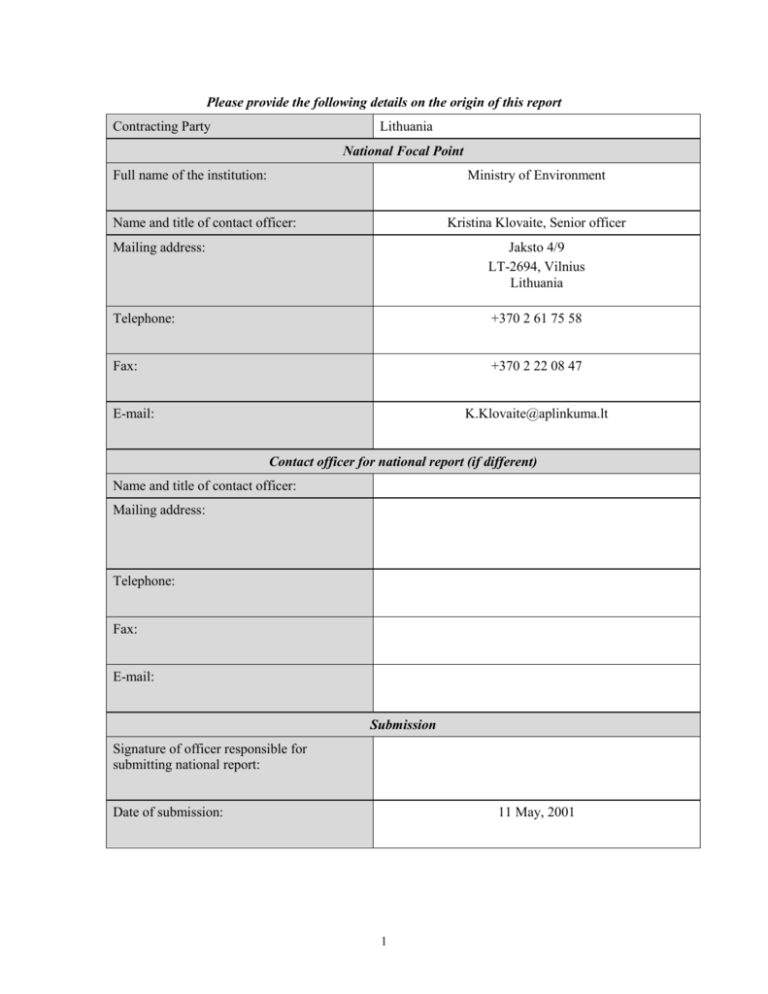
Please provide the following details on the origin of this report Contracting Party Lithuania National Focal Point Full name of the institution: Ministry of Environment Name and title of contact officer: Kristina Klovaite, Senior officer Mailing address: Jaksto 4/9 LT-2694, Vilnius Lithuania Telephone: +370 2 61 75 58 Fax: +370 2 22 08 47 E-mail: K.Klovaite@aplinkuma.lt Contact officer for national report (if different) Name and title of contact officer: Mailing address: Telephone: Fax: E-mail: Submission Signature of officer responsible for submitting national report: Date of submission: 11 May, 2001 1 Please provide summary information on the process by which this report has been prepared, including information on the types of stakeholders who have been actively involved in its preparation and on material which was used as a basis for the report The information in this report was provided by specialists of the Ministry of Environment, scientists of Institute of Botany (Dr. Zigmantas Gudzinskas), and Institute of Ecology (Dr. Povilas Ivinskis) 2 Article 8h Alien species 1. What is the relative priority afforded to implementation of this Article and the associated decisions by your country? a) High b) Medium c) Low X 2. To what extent are the resources available adequate for meeting the obligations and recommendations made? a) Good b) Adequate c) Limiting X d) Severely limiting 3. Has your country identified alien species introduced? a) no b) only major species of concern X c) a comprehensive system tracks introductions 4. Has your country developed national policies for addressing issues related to alien invasive species? a) no X b) yes – as part of a national biodiversity strategy (please give details below) c) yes – as a separate strategy (please give details below) 5. Has your country assessed the risks posed to ecosystems, habitats or species by the introduction of these alien species? a) no X b) only some alien species of concern have been assessed c) most alien species have been assessed 6. Has your country undertaken measures to prevent the introduction of, control or eradicate those alien species which threaten ecosystems, habitats or species? a) no measures b) some measures in place X c) potential measures under review d) comprehensive measures in place Decision IV/1 Report and recommendations of the third meeting of SBSTTA 7. Is your country collaborating in the development of projects at national, regional, sub-regional and international levels to address the issue of alien species? a) little or no action X b) discussion on potential projects under way c) active development of new projects 3 8. Does your national strategy and action plan address the issue of alien species? a) no b) yes – limited extent X c) yes – significant extent Case-studies 9. Has your country submitted case-studies on the prevention of introduction, control, and eradication of alien species that threaten ecosystems, habitats or species, in response to the call by the fourth meeting of SBSTTA? a) no – please indicate below whether this is due to a lack of available casestudies or for other reasons X1 b) yes – please give below any views you may have on the usefulness of the preparation of case-studies for developing a better biological understanding of the problem and/or better management responses. 10. How many case-studies are available that could be used to gain a better understanding of the issues surrounding alien species in your country? a) none b) 1-2 – limited understanding X c) >2 – significant information available Transboundary issues 11. Are known alien invasive species in your country also a problem in neighbouring or biogeographically-similar countries? a) not known b) none c) a few – but in general alien invasive species problems are specific d) more than a few - in general we share common problems with other countries X 12. Is your country collaborating in the development of policies and programmes at regional, subregional or international levels to harmonise measures for prevention and control of alien invasive species? a) little or no action X b) discussion on potential collaboration underway c) development of collaborative approaches for a limited number of species d) consistent approach and strategy used for all common problems 4 Further comments X1 due to lack of available case studies 5


